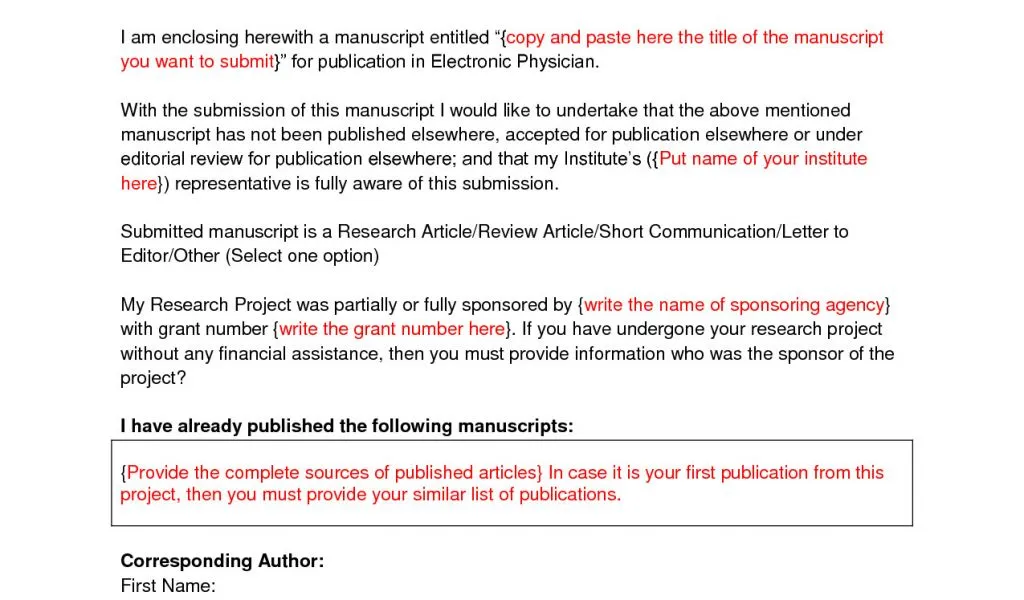Why a Cover Letter is Vital for Your Manuscript
A cover letter for a manuscript is far more than just a formality; it’s your initial handshake with a publisher or agent, a crucial first impression that can determine the fate of your work. In a world saturated with manuscripts, a well-crafted cover letter is your opportunity to stand out from the crowd, to persuade the recipient that your manuscript is worth their time and consideration. The cover letter serves as a gateway, providing context, showcasing your expertise, and ultimately, convincing the reader to delve into the pages of your manuscript. Without a compelling cover letter, even the most brilliant manuscript can be overlooked, lost in the deluge of submissions that publishers and agents receive daily. Therefore, understanding the significance of a cover letter is the first step toward successful publication.
Understanding the Purpose of a Cover Letter
The primary purpose of a cover letter is to introduce your manuscript and yourself to the publisher or agent. It’s a concise document that provides context, highlighting the key aspects of your work and why it’s a good fit for the recipient. Unlike the manuscript itself, the cover letter allows you to speak directly to the reader, to establish a personal connection, and to explain your intentions and motivations. It’s a chance to sell your work, to demonstrate your passion, and to persuade the reader that your manuscript aligns with their publishing interests. Furthermore, the cover letter provides a brief overview, enticing the reader to take a closer look at your manuscript. It allows you to state the genre of your work, as well as the word count, which will help agents or publishers quickly determine if they are interested.
Key Components of a Cover Letter
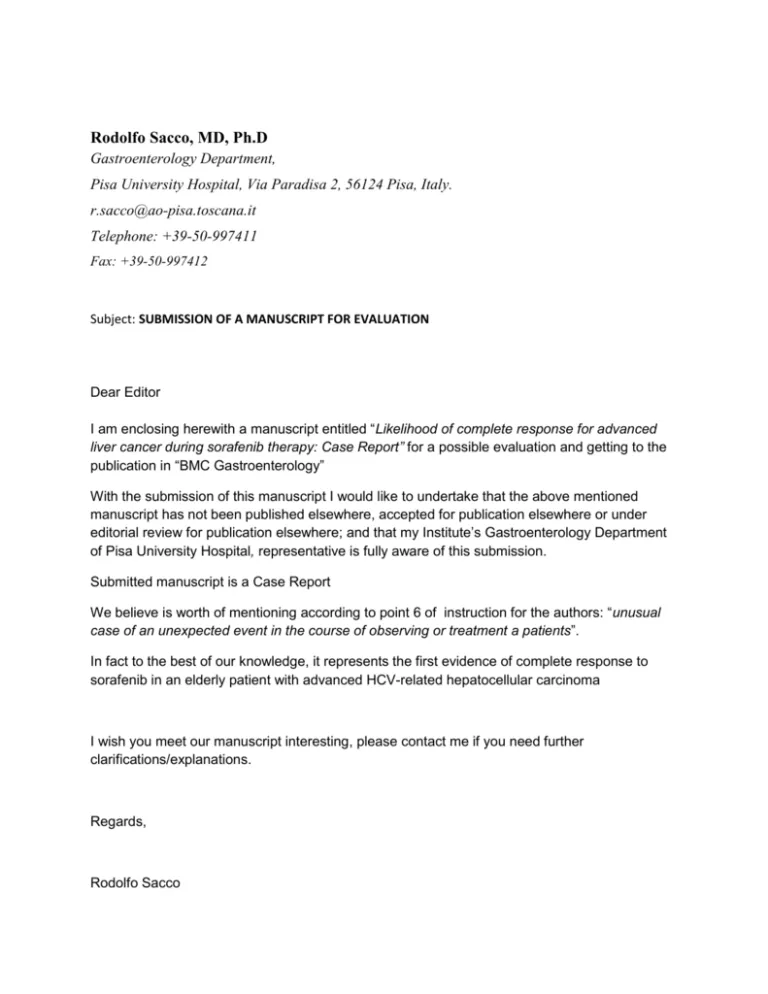
A well-structured cover letter should include several key components. Begin with your contact information, and that of the publisher or agent, ensuring that you address the correct individual. The introduction should immediately grab the reader’s attention, stating the title of your manuscript and its genre, and also briefly mentioning your intentions. The body of the letter should summarize your manuscript, highlighting its key themes, plot points, and target audience. Make sure to include the manuscript’s strengths, and why it would fit the publisher’s needs. Also, include your expertise and credentials. Finally, conclude the letter with a call to action, expressing your enthusiasm and willingness to discuss your manuscript further. Remember, clarity and conciseness are key, as the reader should quickly grasp the essence of your manuscript and its potential.
Contact Information and Manuscript Details
Start your cover letter with your contact information. Include your full name, address, phone number, and email address. This allows the publisher or agent to easily reach you. Always address the recipient by name, and research the correct contact person; agents and editors prefer personalized communications. Next, provide details about your manuscript. Include the title of your manuscript, the genre, and the word count. This will help the reader quickly understand what your manuscript is about and whether it fits their publishing interests. Consider adding a brief mention of any awards, or previous publications, if applicable. Remember to maintain a professional tone throughout the letter. Make sure you write your letter, addressing the contact person by name, and be sure to research which of their publications you are writing to them about. This way, they will be able to tell the work is not a form letter.
Crafting a Compelling Introduction
The introduction to your cover letter is your chance to make a strong first impression. Start by immediately stating the title of your manuscript and its genre. This provides the reader with instant context. Then, briefly introduce yourself and mention how you discovered the publisher or agent. This can be through a referral, conference, or research. State your specific intention – to submit your manuscript for consideration. Be concise and enthusiastic. The introduction sets the tone for the rest of the letter. Consider including a hook, such as a brief compelling statement about your manuscript’s unique selling proposition. This will capture the reader’s attention right away. Always be professional and respectful. Avoid sounding overly familiar or casual. The introduction should be informative, captivating, and tailored to the recipient.
Highlighting Your Manuscript’s Strengths
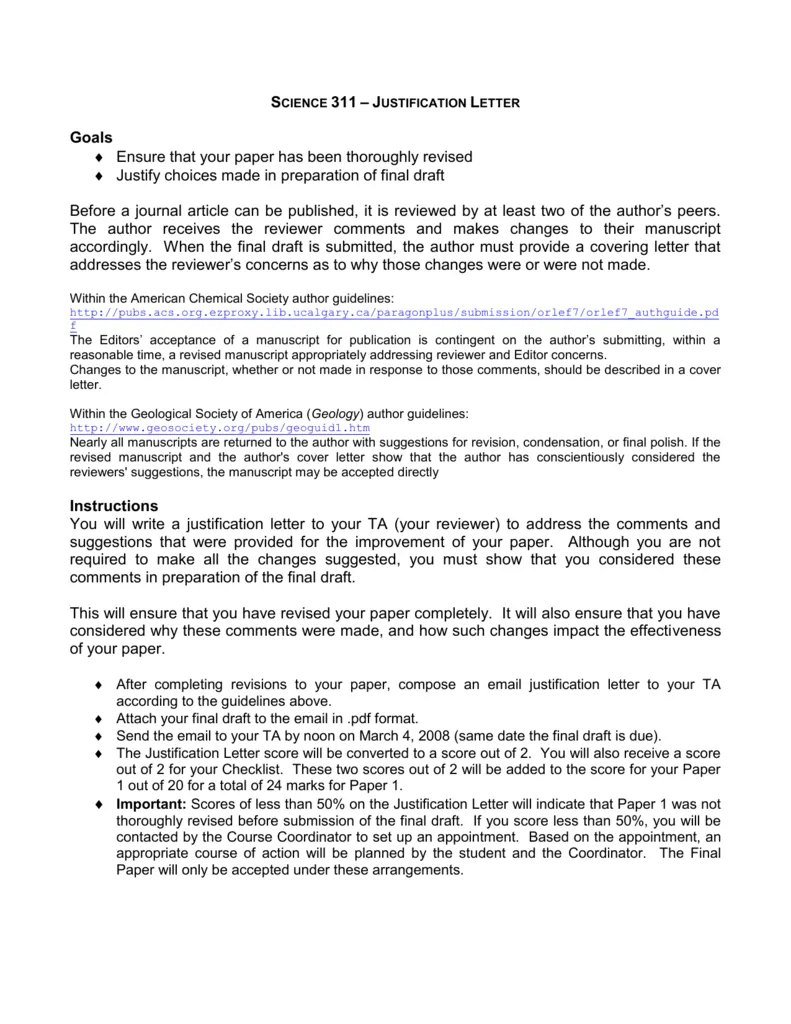
Highlighting the strengths of your manuscript is a key part of any cover letter. Focus on what makes your work unique, compelling, and marketable. Identify your manuscript’s core themes, and explore the ways your manuscript addresses these themes. Discuss the unique aspects of your manuscript’s plot, characters, or setting. Explain why your manuscript is relevant to the current market and audience. Showcase any awards, accolades, or positive reviews your manuscript has received. If your manuscript has been workshopped or critiqued, mention this. Tailor your language to emphasize your manuscript’s appeal, and demonstrate your understanding of its potential. This shows that you have an understanding of what is important. Be enthusiastic and passionate when showcasing your work, which will translate to the reader. Show confidence in the quality of your work, making the reader want to learn more.
Summarizing Your Manuscript
Provide a brief summary of your manuscript, focusing on its core themes, plot, and target audience. Keep it concise, usually between two to three paragraphs. Begin with a brief overview of your manuscript’s premise and genre. Mention the main characters, central conflicts, and key plot points. Highlight what makes your manuscript stand out. If your manuscript fits a particular niche or addresses a specific audience, mention it. Summarizing your manuscript effectively will give the reader a good overview of its content. Make sure you maintain the reader’s interest with your summary. Use vivid language and a clear structure. Avoid spoilers. Tailor your summary to your target audience, or market. The goal is to entice the reader to want to read your manuscript. This will help you gain a step closer to your end goal.
Showcasing Your Expertise and Credentials
Include information about your background, credentials, and previous writing experience, if relevant. Highlight your expertise or any personal connection to your manuscript’s subject matter. Mention any relevant education, publications, or awards. Even if you are a new writer, emphasize your passion for writing and commitment to producing quality work. If you have relevant work experience, showcase it here. Tailor your credentials to the specific genre and target audience. Be honest, and avoid exaggeration. Your credentials add credibility to your manuscript. The more you show your work, the more inclined the reader will be to take it seriously. This will give you a leg up on the competition, so make sure you showcase yourself in the best possible way. Be professional, and avoid being too humble.
Tailoring Your Letter to the Publisher
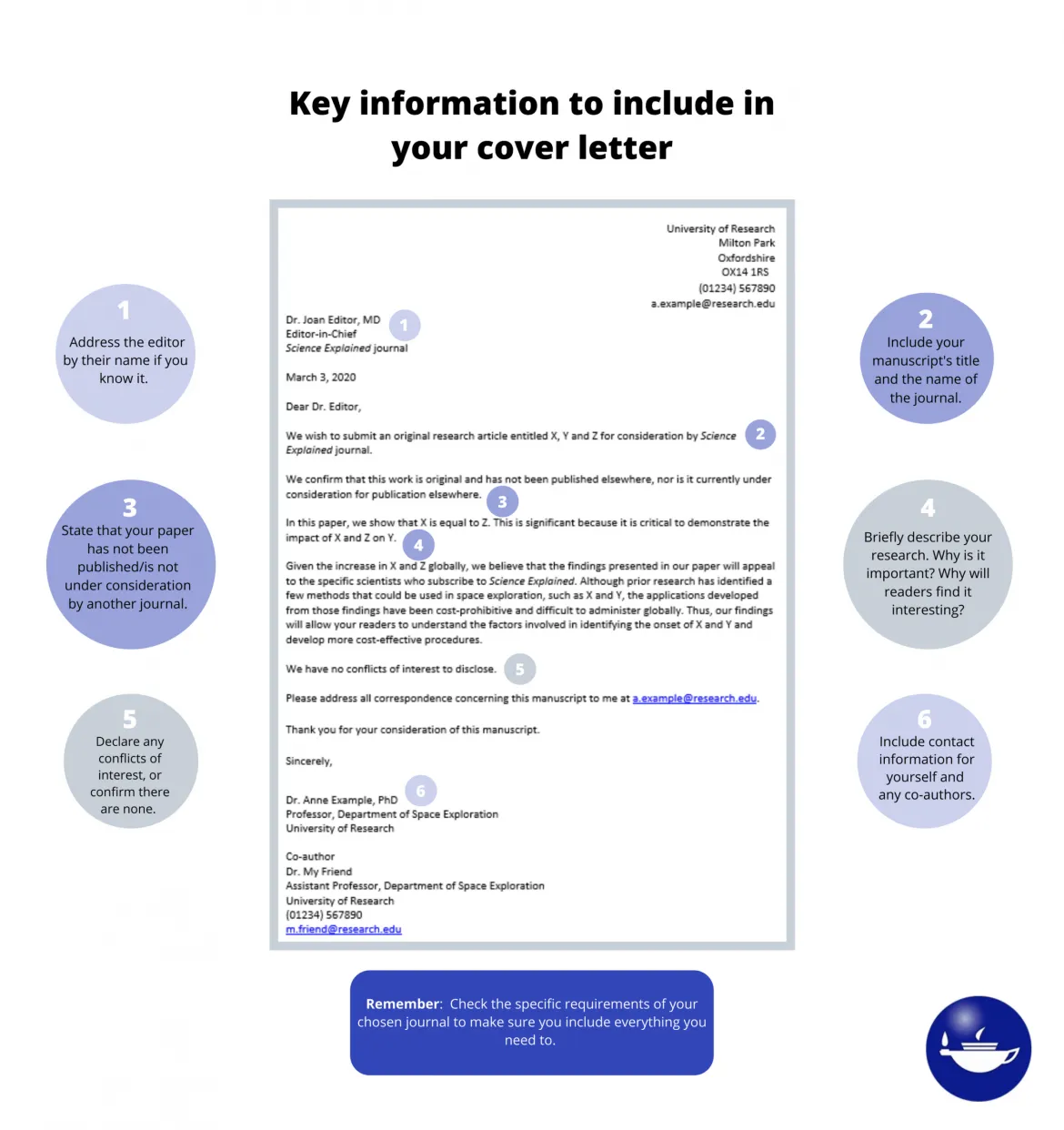
Before submitting your cover letter, carefully research the publisher or agent. Tailor your letter to their specific interests, and demonstrate your understanding of their publishing history. Read their guidelines for submissions, and follow them closely. Personalize your letter. Mention specific titles they have published that are similar to your manuscript, and explain why your work is a good fit for them. Show that you understand their brand and target audience. This will demonstrate your professionalism and commitment. Tailoring your letter shows that you have taken the time to research the publisher and that you are serious about getting published. This will increase your chances of getting your manuscript considered.
Formatting and Presentation Tips
Pay attention to the formatting and presentation of your cover letter. Use a standard, professional font, such as Times New Roman or Arial, and ensure your font size is easy to read. Use a clear, simple layout with consistent margins and spacing. Avoid using excessive formatting, and keep your letter concise. Proofread your letter carefully. Check for any grammar or spelling errors, and have someone else review it for you. Your cover letter should be well-organized and easy to read. Pay attention to the overall appearance of your cover letter. Ensure that it looks professional and polished. Formatting and presentation are just as important as the content of your letter.
Proofreading and Editing Your Cover Letter
Proofreading and editing your cover letter is absolutely critical. Errors in grammar, spelling, or punctuation can immediately undermine your credibility. Carefully review your letter multiple times. Check for any typos, inconsistencies, or awkward phrasing. Use a grammar and spell-checker, but do not rely on it completely. Proofread carefully, and read your letter aloud, to catch any errors that may have been missed. Consider having a trusted friend, colleague, or writing professional review your letter. It is always helpful to get another perspective. Remember, your cover letter is a reflection of your professionalism. Proofread your cover letter before sending it. It can make or break your work, and a simple mistake could be detrimental to your work. A polished letter demonstrates your attention to detail. Proofreading your cover letter is one of the most crucial steps.
Finalizing and Submitting Your Cover Letter
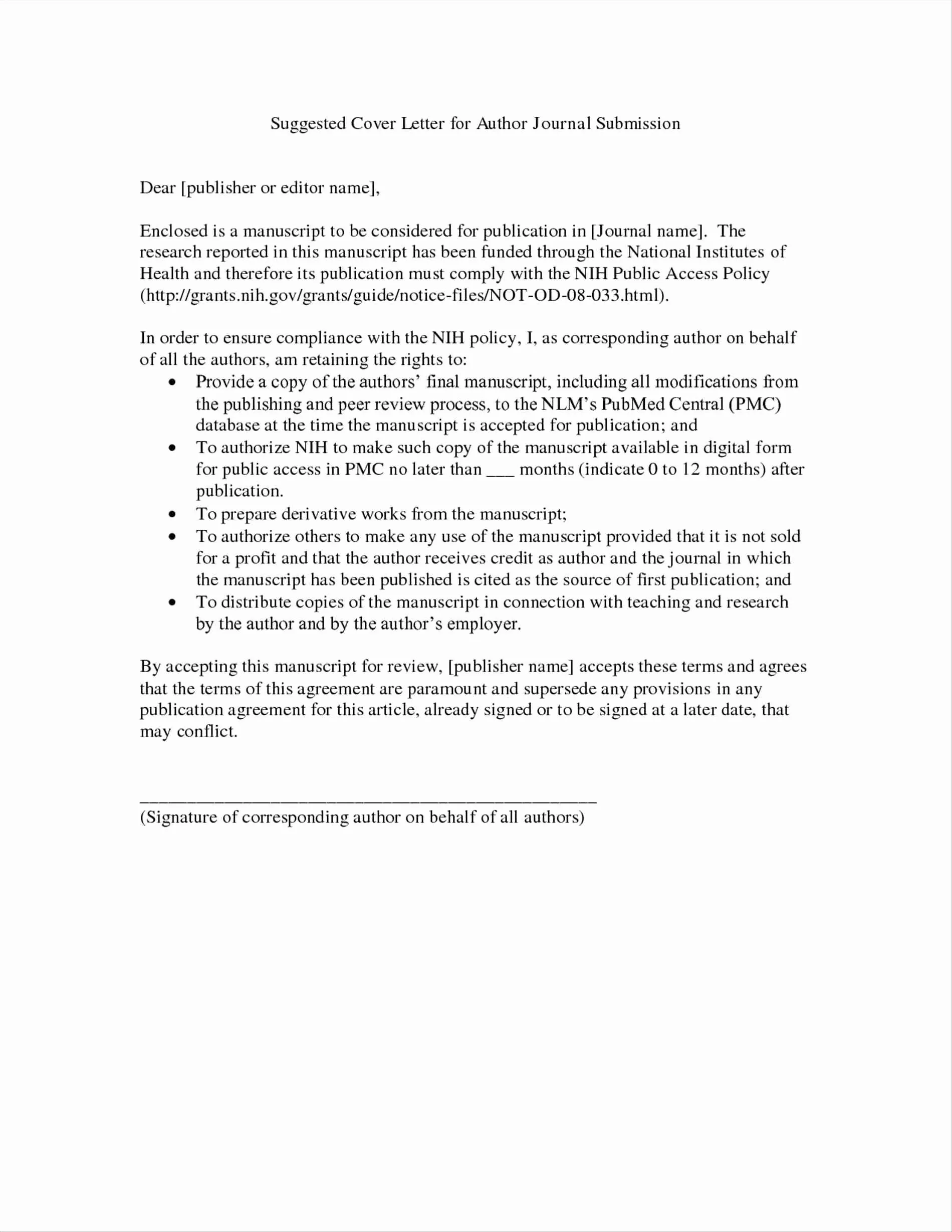
Before submitting your cover letter, double-check all the details. Ensure that you have included your contact information, the correct recipient address, and all manuscript details. Make sure you are following the publisher’s or agent’s submission guidelines, and adhere to their specific instructions. Review your letter one last time to confirm that it is error-free, well-written, and tailored to the recipient. Submit your cover letter with the manuscript, as instructed. Follow up appropriately, if permitted by the publisher or agent, and maintain a professional and courteous tone. Remember, the submission process is your opportunity to showcase your work, professionalism, and commitment. Take your time, and be thorough. This will help set you apart from other writers. Your cover letter is your first step, so take it seriously.
